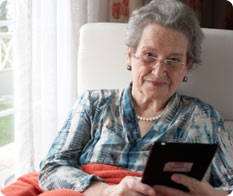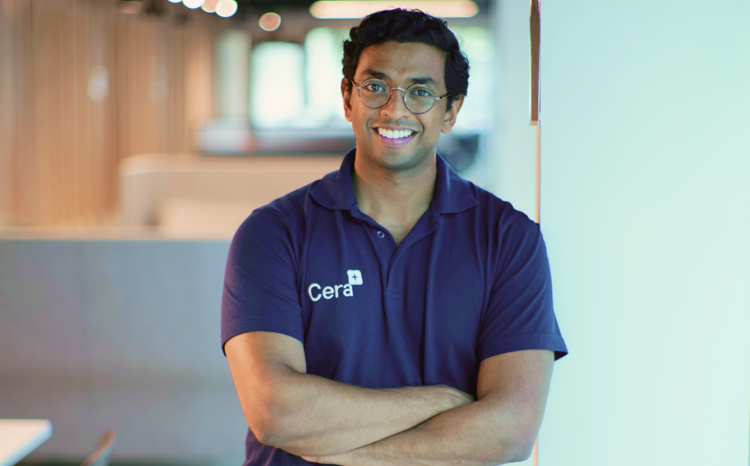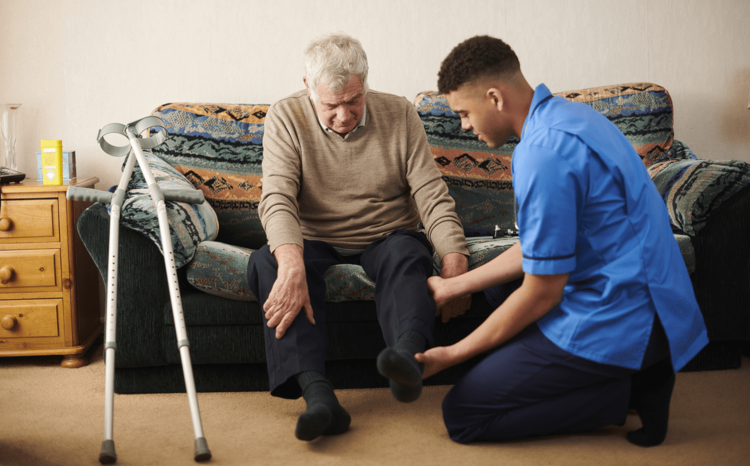Technology for the evolving world of consumer health
- 22 March 2010
 |
|
What role can technology play in |
Britain’s population is ageing and we are just starting to see the effects. In the past five years, the first of the ‘baby boomers’ – the generation born immediately after the Second World War – have started to collect their pensions.
In 15 to 20 years, they will be entering their 80s. Over the same period of time, the proportion of working age and young people in the population will fall, because the generations that have followed the boomers have been smaller as family sizes have shrunk.
The Office of National Statistics says that last year there were still 3.3 UK workers for every UK pensioner. By 2030, there will be just 2.9 [add ONS bar graph of changing age structure of population].
An older population does not have to be a sicker one – indeed the ONS says there is evidence that people are staying healthier for longer. However, the greater number of ‘old old’ people in the population is likely to put pressure on health and care services; just as there are fewer people to staff them or to provide informal care.
To add to the mix, there are also concerns about the health of those subsequent generations. In 2002, chief medical officer Professor Sir Liam Donaldson caused a stir by warning that an “obesity timebomb” could reverse the post-war health gains that came, in particular, from the decline in smoking.
Then there’s the money…
Funding is another major issue. In the run up to the general election, the focus will be on ‘cuts’ to public services. Yet even if health and social care budgets are maintained at their current level, a gulf will open up between the care they are funded to provide and demand for it. NHS chief executive Sir David Nicholson has put this gulf at £20 billion over just a few years.
This means that traditional models for delivering care, using health professionals with expensive, lengthy training, based in expensive, inflexible hospitals are looking increasingly redundant. The pointer is turning firmly towards supported self-care, with an emphasis on remote and online services, and on prevention to stop people needing them in the first place.
New models needed
This is making telehealth systems a subject of great interest for governments and healthcare systems looking for answers to the seemingly intractable problems that they face; in both developed and developing countries.
In the UK, services to alert carers to falls and other emergencies are well established. A number of cities have run telehealth projects, with an increasing focus on monitoring patients with chronic lung conditions.
The Department of Health has also set up three whole system demonstrator projects in Cornwall, Kent and Newham. These are intended to test the practicalities of health and social care services working together and working with assistive technology.
However, they have struggled to identify, recruit and retain their target of 6,000 users and they have run into a number of other practical problems; such as how to cope with product recalls and updates and how to collate data.
Overall, the picture is one of very slow progress. Unsurprisingly, some of the major players in the telehealth and personal devices market are now calling for more government action to make it “mainstream rather than marginal.”
Questions needing answers
One problem with telehealth projects to date is that they have been forced to rely on emerging infrastructure and first generation devices that are not as sleek as some of the consumer products that their users may encounter in other areas of their lives.
Yet ugly kit and clunky software are not the only barriers. Mainstreaming telehealth will involve tackling issues that are common to almost all healthcare IT projects; such as how to identify who data relates to and what standards should be used for sending it and establishing that it can be trusted.
It will also mean tackling some issues that are specific to the sector; such as how to make sure that telehealth replaces rather than adds to existing services and how to decide which of a range of commissioning and providing health and social care organisations should get any cash savings that are generated.
Nevertheless, there are some causes for optimism. It may be that initiatives like the Continua Alliance are starting to deliver standards based, interoperable devices just as other pieces of the jigsaw are falling into place.
A few years ago, patients might have resisted the idea of regular, electronic communication with a health professional. Now so many private and public sector organisations run online and mobile advice services, they might find it odd if the NHS failed to join in.
Illness and wellness
If there are reasons to be optimistic that new models can be found to support the ageing population, the outlook is less bright when it comes to the second big issue for the future; people living lifestyles that put them at risk of developing ill health at younger ages.
The days when children walked to school and ate mostly home cooked food produced an “accidental wellness” absent in a generation used to fast food, snacks and a lift in the car.
This wider consumer health – or wellness – agenda is being targeted by some big players; most obviously Microsoft and Google, both of which have launched personal health record platforms that are being promoted as repositories of fitness as well as traditional health data.
However, it’s far from clear that yet more repositories of data will have an impact if they are set up in isolation from health services. There are some big psychological issues to face as well; what incentives do people have to live healthy lifestyles and stay away from health and social services?
Reasons to be cheerful; and reasons not to be
Health issues are always among the top search topics on the internet. There is a growing body of useful information and support online for consumers, ranging from help to lose weight to support for people with rare conditions.
It has never been easier to get information about health and online services reach out to groups, such as young men, that have been hard-to-reach using traditional health promotion channels. Yet however powerful the health messages on the net, they are competing against the huge spending power and marketing flair of corporations selling fast food and video games.
The baby boomers attract a lot of political, policy and media attention; which is unsurprising, given their number, political clout and the sheer scale of the change that they will bring about. Yet they are not the only generation that will pose challenges for healthcare in the future. Indeed, they may not even be the generation to pose the most intractable problems.
ISOFT and consumer health
Greg King, director of consumer healthcare at iSOFT stresses that demographic and epidemiological problems facing healthcare systems are ubiquitous.
“All governments are talking about keeping people out of hospital, and making the individual more responsible for managing their own treatment and keeping well; and they are spending significant sums on it,” he says.
Some of that money is going on technology and, in particular, on telehealth, and other services to encourage people to take “more responsibility” for their own health and treatment. Yet many projects have struggled to get beyond the pilot stage.
King feels telehealth projects have been overly focused on devices and collecting data, which can overwhelm the services trying to deal with it. He also feels they have been working with the wrong type of “gadgets” and using the wrong type of connectivity – Bluetooth – to link them to scales, monitors and the like.
As a result, he says, people have been obliged to live with bulky, beige boxes in prominent spots in their living rooms; when they want discrete devices with wireless connectivity that can store information until they are ready to send it from home, work, holiday cottage or sandwich shop queue by mobile phone.
iSOFT has just announced a partnership with Swiss company Medic4all to create an “end to end” telehealth solution that will address some of these issues. King says it will focus on using the “right” devices, with the “right” connectivity – wireless.
It will come with middleware to help users, monitors and clinicians pick out the important information from the mass of readings generated; and eventually it will have iSOFT’s electronic patient record, Lorenzo “wrapped around it” so that “if you are in Lorenzo you can go into the telehealth environment and see what is there as well.”
Questions and issues for the round table discussion
1. As the briefing explains, there are several strands to the discussion. Are there any demographic issues we have missed? And where do the real problems lie?
2. How do generational issues affect this debate? How wedded is the public to the existing model of care? Will the next generation of telecare and telehealth users be more at ease with technology? Are we good enough at matching technology to the capabilities and preferences of the people meant to be using it?
3. What other factors are holding back adoption of telehealth and telecare? Is the infrastructure mature enough? What other technological problems need to be faced? Are we missing some key standards? What about the regulatory picture?
4. Councils are already feeling the financial pinch and the NHS will start to feel it from the end of the coming financial year. Will this blight or encourage telehealthcare services? What about personal budgets: could they help to drive care out of traditional settings and into homes?
5. Is the outlook really so poor for the generation coming along behind the babyboomers and their children? They seem destined to succumb to obesity, poor mental and physical health; but can things be changed and what role can technology play in changing them?
Contribute to the debate:
We are interested to hear your views on this topic and to feed them into the round table, which will be held later this week. Use our comment functionality or email thoughts and further questions to Linda Davidson.





